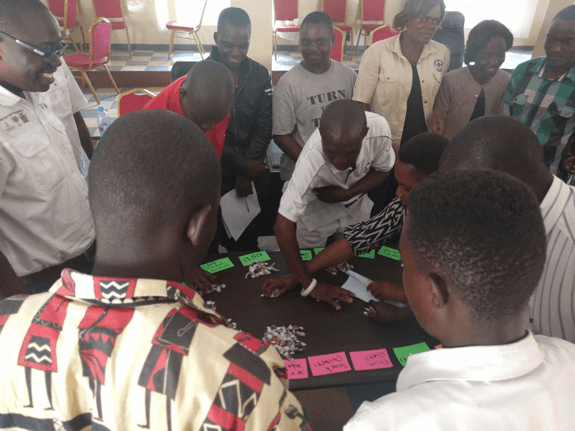Blog
Working for long-term change through network analysis

Pact practices capacity development to ensure lasting change based on local leadership. Over our 45-year history of capacity development in more than 30 countries, we’ve seen that while capacity development includes individuals and organizations, long-term change requires a strengthened system.
Network analysis is one of the tools we use to understand and strengthen systems. Having network analysis data accessible to all stakeholders on the Capacity Solutions Platform (CSP) ensures transparency and long-term learning. Like any lasting solution, there is no “one-size-fits-all model.” Below are three examples where we’re using network analysis to strengthen health systems, ecosystems, and community governance systems.
Launching Collective Impact in Zambia
In Zambia, the USAID-funded Zambia Community HIV Prevention Project (Z-CHPP) used network analysis to launch the Collective Impact approach with national-level organizations and government. Network members completed a survey to map how they collaborate and communicate with one another. We created network maps from the survey results and the stakeholders validated and discussed the findings presented in the maps. Network analysis helped the stakeholders identify a backbone organization and develop a network strengthening plan to ensure ongoing, open communication and collaboration among the Collective Impact members. By using network analysis, the stakeholders were able to strengthen two of the five Collective Impact pillars (mutually reinforcing activities and backbone organization). In concert, Collective Impact and network analysis will ensure a stronger system of stakeholders who are committed to HIV prevention by setting up clear decision-making hubs with consistent communication and by having rotating meeting locations among stakeholders.
An ecosystem approach in Liberia
In Liberia, community committees, local NGOs, and local government offices used network analysis to consider an ecosystem approach to community forestry management with the USAID-funded Forest Incomes for Environmental Sustainability (FIFES) project, to which we are a partner to ACDI/VOCA. The stakeholders of this informal and nascent network developed and answered survey questions around their current collaboration and envisioned what their network should look like. The network maps produced from the survey results showed stronger county collaboration and formed the basis for a network strengthening plan that will help them achieve their ideal network. By looking beyond county collaboration, these local management groups will be able to plan for the long-term sustainability and community benefit of Liberia’s forests.
Aligning local governance systems in Malawi
Traditional authority areas in Malawi are using network analysis to ensure that all levels of community authority are working together to sustainably manage Malawi’s lakes on the USAID-funded Fisheries Integration of Society and Habitats (FISH) project. Stakeholders in these areas must communicate and work together to ensure adherence to by-laws of lake use. The project conducted network analysis in eight of the traditional authority areas to map collaboration and developed network strengthening plans to ensure more consistent partnership. By addressing the whole system along these lakeshores, FISH is ensuring that leaders in different sectors, from police to chiefs to fishermen’s associations, feel ownership of the sustainable use of Malawi’s natural resources.